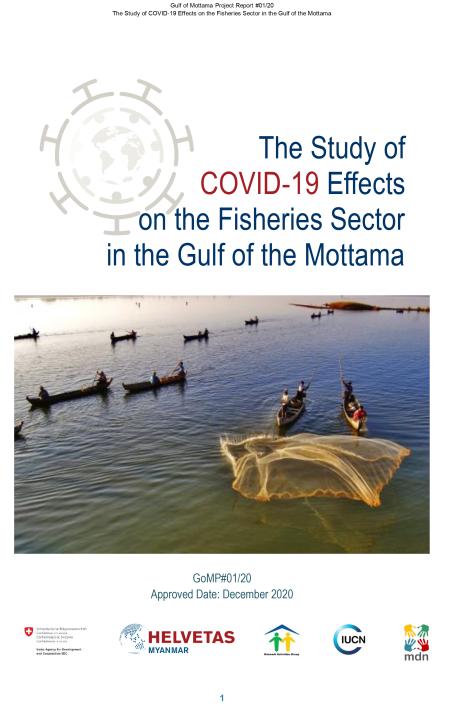The global pandemic COVID-19 has rapidly spread around the world with catastrophic impacts on social and economic.
The pandemic, as an unprecedented crisis, is rapidly altering the development context of Myanmar and threatening community development. The crisis has become far more than a health crisis. It is a multifaceted human crisis affecting societies and economies. The short-term and long-term effects of COVID-19 may lead unpredictable vulnerability of small-scale fishers and coastal communities. Government of Myanmar has prepared a system-wide response to the Pandemic and has been trying to minimize unexpected risks and threats in food production.
In Myanmar, there are 3.2 million people employed in fishery and aquaculture sector. Economic growth of the country is projected to drop from 6.8 % in FY18/19 to 0.5 % in FY 19/20. Myanmar Government has released the COVID-19 Economic Relief Plan (CERP) in April 2020 including tax relief, credit to business, food and cash provision to households and response coordination. In September 2020, Government has developed COVID-19 National Response and Recovery Plan with comprehensive measures to address short term, medium term and long term needs.
International development partners have contributed about $2 billion for the implementation of the CERP quickly. ($50 million by World Bank , $25 million by EU , $150 million by ADB provided $150 million loan to boost country’s economy targeted for SME, tourism, transportation, logistic and supply chain services. The Ministry of Planning, Finance and Industry of Myanmar has set up a 100 billion kyat (equals to $75 million) as emergency loans for all sectors.
Industrial production of the country is expected to contract by 0.2 % in FY 19/20 as restrictions of access to labour and supplies of the inputs. Travel bans continue negatively impact upon wholesale and retail trade, service industries, and exports are expected to remain weak until 2021. Tax revenues are projected to decline by 6.0 %. A negative growth of between – 2.4 to – 1.1 % is forecasted for agri-food system GDP in 2019/2020 (IFPRI 2020).
Published Date:
